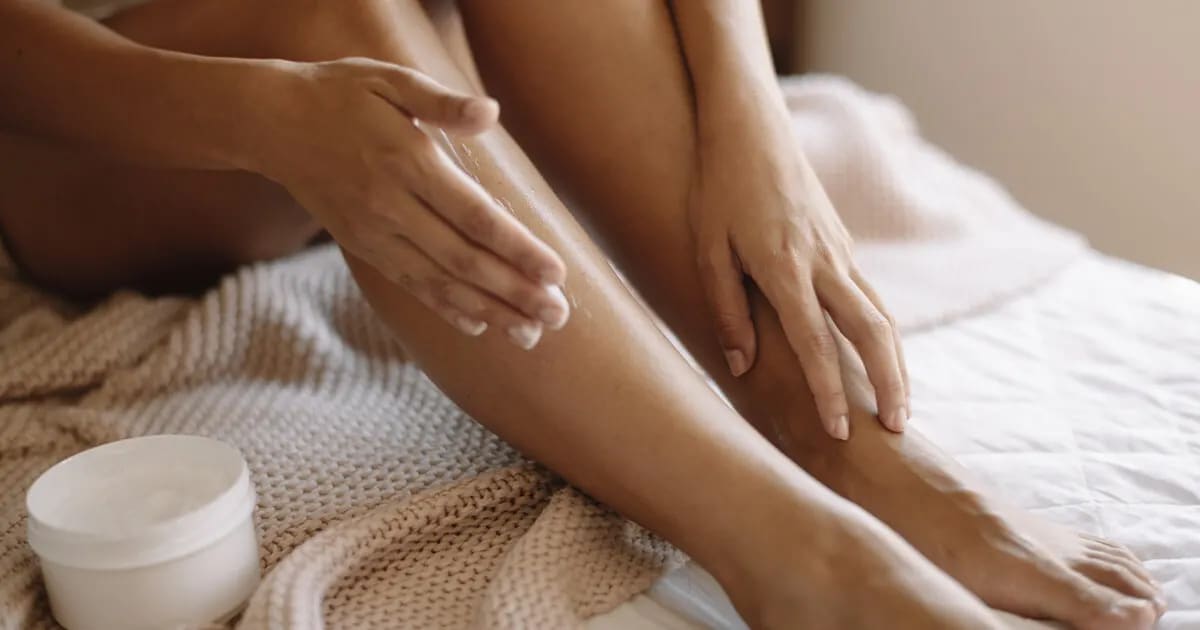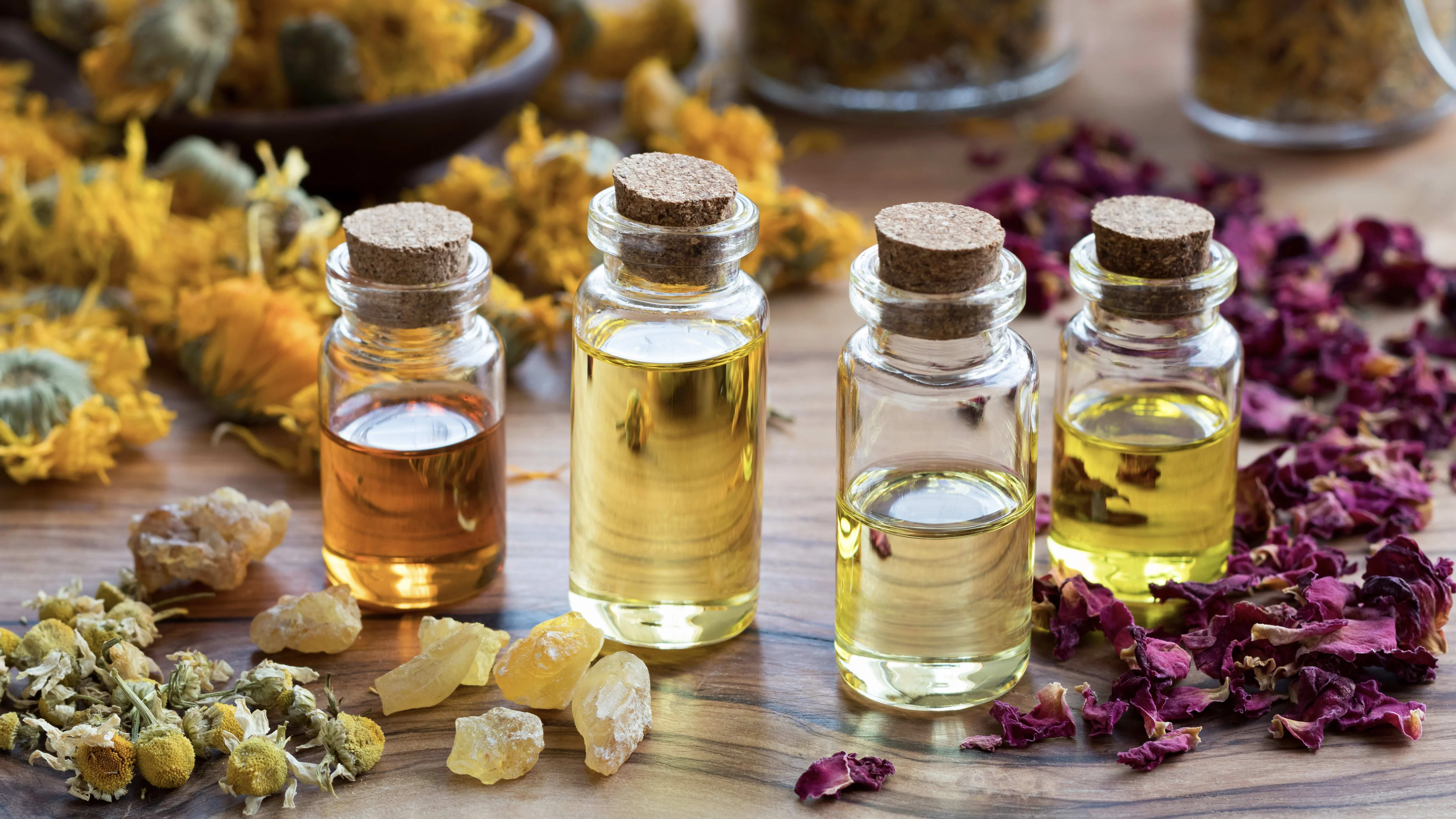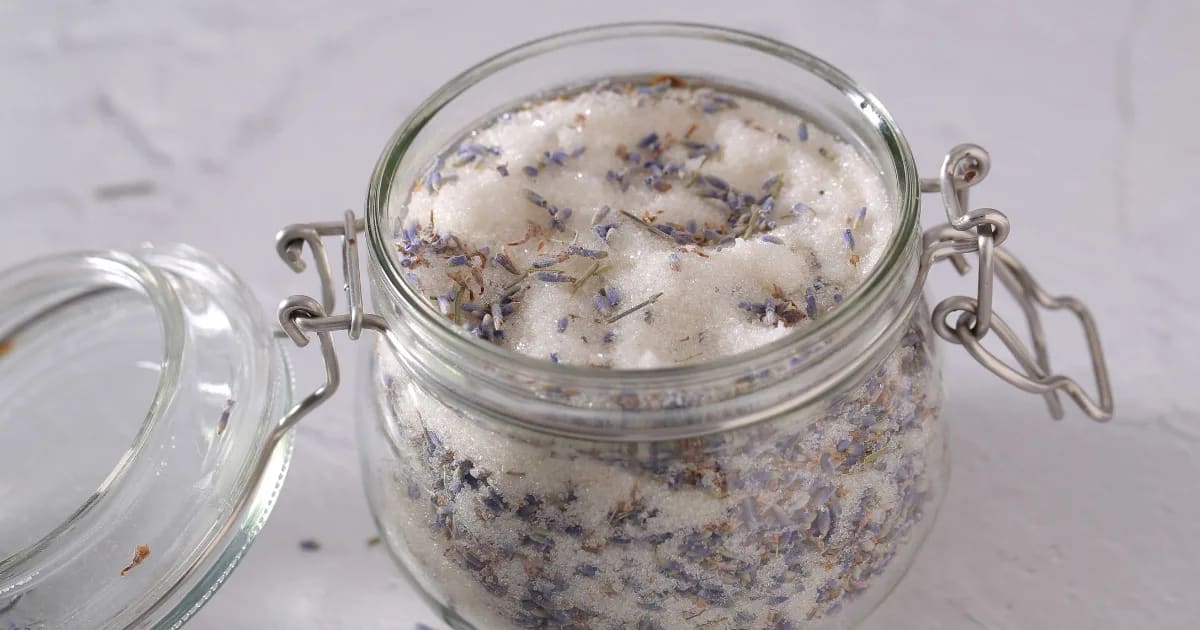Applying Essential Oils to Skin: What You Need to Know

Are essential oils safe on the skin?
The answer is yes! Essential oils are safe to use on your skin . . . as long as you understand how to use them safely.
Putting essential oils on your skin is called “topical application,” and it’s a great way to access the therapeutic benefits of essential oils. In this article, we’ll cover all the details, from how your skin absorbs essential oils to when & why to use essential oils topically to all the safety tips you need to know to avoid potential reactions.
How does your skin absorb essential oils?
Your skin is your body’s largest organ. It may seem impermeable, but it’s not! Think of your skin as a thick membrane that keeps most foreign substances out of your body while allowing some to pass through.
You’ve probably noticed the way drops of water will bead up on your skin. That’s because your skin is full of natural oily lipids (aka fats), and these fats help your skin repel water.
While the very outermost layer of your skin can absorb a certain amount of water (which helps keep your skin hydrated), that water evaporates pretty fast. And the small amount of water your skin does absorb doesn’t reach the rest of your body. (Otherwise, you could replace drinking water with baths or showers!)
It’s easier for your skin to absorb other lipids.
Carrier oils, butters, and essential oils are natural lipids.
Their molecules can penetrate the layers of your skin.
Depending on the specific molecule, once they’re absorbed by your skin, they enter your bloodstream and have various effects on your body (depending on the specific molecules in the oil).
Some areas of the skin absorb lipids faster than others. Areas with thin skin and a lot of pores, and hairs are the most absorbent, while your palms and the soles of your feet are the least absorbent. They have the thickest skin, no pores, and no hair. (They do have plenty of sweat glands, but sweat glands let stuff out of the body, not in.)
Even if you apply an essential oil blend to a highly absorbent area, like the thin skin on the inside of your wrist, the topical application provides a slow method of getting the oils into your body. (Inhalation is the fastest way.)
Why choose a topical application?
Topical application allows essential oils to absorb slowly over a specific area of the body.
That’s why we use a topical application to:
Experience the oils’ benefits slowly over several hours
Soothe pain in a specific part of the body
Nourish or repair the skin itself
You can make topical blends for just about any purpose! They’re good for skin care, pain relief, releasing muscle tension, daily immune support, emotional balance, relaxation, restful sleep, and more.
When it comes to skincare, most of your moisturizing comes from carrier oils and butters. Adding essential oils can help by delivering antioxidants, promoting cell repair, calming inflammation, and encouraging circulation.
5 Tips for using essential oils safely on Skin
Tip 1: Dilute your essential oils.
Essential oils are highly potent, concentrated plant essences.
The #1 rule of using essential oils on your skin is “dilution, dilution, dilution!
One drop of rose essential oil might not seem like a lot, but it can take 30–50 rose blossoms to create that single drop. If a 5 ml bottle holds approximately 125 drops, that means it contains the oil of 3,750–6,250 roses.
That puts things in perspective! Applying that much plant material can be very stressful for your skin. Now you see why essential oils can cause reactions if they’re not applied to the skin safely.
Okay, now we understand the importance of dilution. So how do you dilute your essential oils?
Tip 2: Use a lipid-based carrier.
You’ll need to use a lipid-based carrier to dilute your essential oils.
A carrier is a natural plant oil or butter.
Some carriers are fabulous for your skin just as they are. Jojoba oil and argan oil are beautiful, spreadable liquids that you can massage right into your skin on their own while shea butter and cocoa butter are firmer. You’ll need to soften or melt them over your stove to make them easier to use.
The carriers you choose will depend on your preferences, what you’re using them for, and your skin type. Get guidance on finding your favorite carriers.
Tip 3: Use a dispersant with water-based carriers.
We’ve mentioned that essential oil carriers come from plant oils and butters. But other substances can be considered “carriers” too—like aloe vera gel or hydrosols (aromatic waters). These are water-based carriers.
While water-based carriers are useful for making blends like hand gels and room sprays, they’re not lipids. They don’t dilute essential oils.
If you add 10 drops of lavender oil to 1 fl oz (30 ml) of lavender hydrosol, you’ll notice the essential oil forms a layer on top of the hydrosol. It’s not diluting at all because oil and water don’t mix.
If you’re using a water-based carrier, you’ll need a natural dispersant, like Solubol, to keep the essential oils safely distributed through the blend.
This makes your water-based blend safe for skin application. You’ll also want to replace your water-based blends every two weeks or so unless you’re using a preservative, so making them in small batches can help you reduce waste
Tip 4: Dilute your oils from 1–3%
Generally, the Aromahead Approach® is to dilute your oils from 1–3%.
 Tip 5: Take care when using phototoxic oils on your skin.
Tip 5: Take care when using phototoxic oils on your skin.
Phototoxic essential oils cause dangerous skin reactions in sunlight.
If you apply a phototoxic oil to your skin and go beyond the topical dilution guidelines for a phototoxic specific oil, and that area of skin is exposed to the sun (or a UV tanning bed) for a length of time, it can cause serious burns, blisters, and discoloration. If you stay within the guidelines, there's no problem!
Find out which oils are phototoxic and learn to use them safely.
We’ll end this section with a general safety tip:
Always check the specific safety information for any oil you’re using. Some oils might contain irritating components (like lemongrass, Cymbopogon citratus, which is rich in citral) or other molecules that have unique safety concerns.
Topical recipes & more tips!
We love making our own DIY topical blends with essential oils!
It’s a huge benefit to understand how to work with carriers. You can customize your own collection of natural therapeutic products for a lot of common wellness issues.
Here are a few recipes to help you get started!
Dry skin? Winter weather is rough on the skin—especially if you’re washing your hands frequently. You’ll want an ultra-luxurious recipe made with carriers that are chock-full of fatty acids, vitamins, and more nourishment for the skin. Try Super Soaker Dry Skin Salve.
Let’s take our hand-care routine up a notch! Visit this post on The Aromahead Blog to learn to make your own gentle foaming hand soap, and follow it up with a moisturizing, protective hand oil.
Protect your complexion this winter! Discover three simple steps to healthy, moisturized skin (even in dry weather).
Calm inflammation in sore, painful areas. This Thyme for Relief recipe is based on research proving thyme oil’s anti-inflammatory benefits.
Stop that scratching! Bug bites and other itchy spots can be so irritating. Make a Cool Blue Chamomile Itch Relief Stick for quick, lasting comfort.
Boost your immune health & keep your skin moisturized with a luxurious must-have winter ally: Whipped Immune Support Butter.
Having trouble with memory or concentration? Make a roll-on blend with rosemary essential oil to help you stay focused and increase your cognitive performance.
Register for the Aromatherapy Certification Program
Gain the knowledge and skills you need to make therapeutically effective essential oil blends! The Aromatherapy Certification Program provides you with the highest-quality aromatherapy education available so you can feel 100% confident in your ability to use your essential oils safely and effectively. You’ll gain the expertise needed to create blends for others – and even transform your career!





